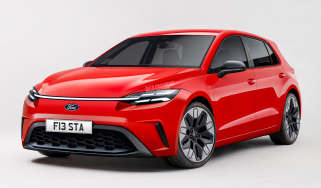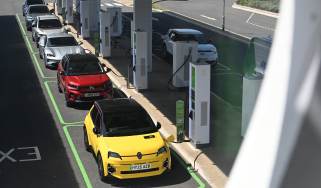Hyundai i30 (2009) - long-term test
After 7,058 miles we've come to the conclusion our clever carrier is a bloomin’ marvellous estate!

Jacks of flooring, bags of gravel, potted plants and wooden fencing – you name it, and our Hyundai i30 Estate has carried it!
Over the last seven months, it has coped with everything we’ve thrown at it. Whether it’s trawling through London on my daily commute or carrying shopping from DIY superstores, it has never let me down.
The boot space in particular has proven invaluable, because I have just had a conservatory built at home. Trying to finish
it off has involved so many trips to my local B&Q that I’m almost on first-name terms with the cashiers!
But our long-termer’s boot has swallowed no end of building materials without a hitch and I’m confident that the wood for our soon-to-be-constructed decking will also fit in there with ease.
What makes the i30 Estate so good? Well, the rear seats are simple to fold down and provide a flat surface when you do. It’s also big. The official figures say it can hold 1,395 litres, and that’s certainly more than I’ve ever needed.
Compared to the supermini MPVs I ran previously, loading my family’s bikes in the back has never been simpler. The extra space helps, but the i30’s lower load height makes lifting and manoeuvring awkward objects really easy.
Hyundai is very proud of the interior space the i30 provides, and I can understand why. After all this time I’m yet to hear a single complaint about the amount of legroom in the back. The car easily accommodates five adults – even if three
of them are six-footers!
My only gripe with the rear bench is the seatbelt warning system, which is still playing up. The alarm sounds for around 30 seconds every time someone vacates either of the two rear side seats.
However, I appreciate the value of the system after carrying a friend’s young children in the back. The indicator lights turned green to reassure me that they were all safely buckled up. My only other complaint is with the built-in iPod port, which is fitted to all i30s as standard.
Sometimes it won’t accept my daughter’s music player, so we’ve been forced to listen to her tunes through our aftermarket Parrot MKi9200 hands-free telephone kit instead. It works every time.
Those quibbles aside, the i30 has been a pleasure to live with. The 1.6 diesel engine has coped admirably with my daily commute into central London, proving to be nippy and responsive around town.
Yet on a recent chance to stretch its legs on a trip to York it was equally adept, cruising happily and comfortably at motorway speeds. Its refinement and economy make for smooth and peaceful long- distance journeys, as you don’t have to stop very often to refill.
The only downside is the car’s five-speed gearbox. I mentioned this in my last report, and its notchy shift hasn’t improved as we’ve piled on the miles. It seems to have a particular problem moving from second to first.
It’s not enough to put me off the Hyundai, but because all the other controls are so light and easy to use, it stands out.
With my urban lifestyle, perhaps I would have been wiser to choose the automatic diesel version of the i30 instead? That way I wouldn’t have to change gears myself. But then again, maybe not; as you can see I like a bit of DIY!
Second Opinion
I’ve racked up a few miles in the i30, and have been very impressed. It’s a genuine alternative to a Ford Focus or Vauxhall Astra – imagine saying that of a Hyundai model from five years ago!
However, I have to agree that there’s something up with our car’s iPod connection. Whenever I hook up my player, the stereo
only reads the tracks in MP3 format, and none of the ones stored as Apple AAC files. Another i30 I drove didn’t have a problem with them, so maybe a trip to the dealer could sort things out.
Dean Gibson
Senior sub editor



